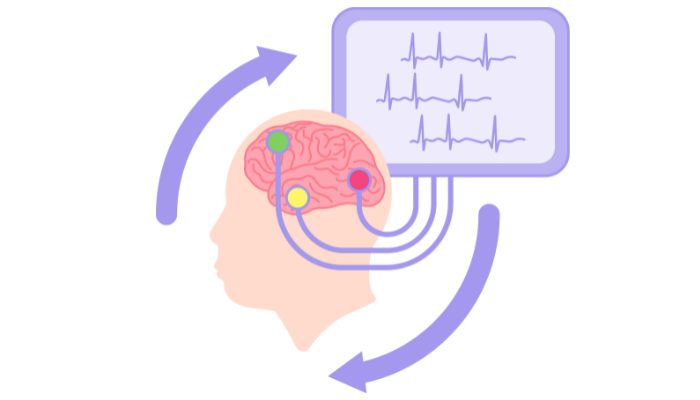
ADHD, or Attention-Deficit/Hyperactivity Disorder, is a neurodevelopmental disorder that affects millions of people worldwide. It is characterized by inattention, hyperactivity, and impulsivity, and can impact many areas of life, including academic and social functioning. While many people with ADHD can manage their symptoms effectively, some may struggle with additional challenges, such as a fear of driving.
Fear of driving, also known as driving anxiety or driving phobia, is a common fear that can impact people of all ages and backgrounds. However, for individuals with ADHD, fear of driving can be particularly challenging due to the underlying symptoms of the disorder. In this blog post, we will explore the link between ADHD and fear of driving, as well as strategies for overcoming driving anxiety and staying safe on the road.
ADHD and Fear of Driving
ADHD symptoms that contribute to fear of driving
Individuals with ADHD may experience a range of symptoms that can contribute to their fear of driving. For example, inattention can lead to difficulty focusing on the road, noticing hazards, or reacting quickly to unexpected situations. Hyperactivity may also make it challenging to sit still for extended periods, leading to restlessness or discomfort behind the wheel. Additionally, impulsivity can make it difficult to follow traffic rules, leading to accidents or close calls on the road.
Studies linking ADHD to fear of driving
Several studies have explored the relationship between ADHD and fear of driving. One study[1] found that adults with ADHD were more likely to experience driving anxiety than those without the disorder. Additionally, researchers have found that individuals with ADHD may have reduced activity in areas of the brain involved in executive function and attention, which could contribute to driving anxiety.
How fear of driving can worsen ADHD symptoms
Driving anxiety can exacerbate existing symptoms of ADHD, making it even more challenging to stay focused and alert behind the wheel. For example, fear of driving can lead to increased distractibility or impulsivity, which can be dangerous while driving. Additionally, avoiding driving altogether can limit an individual’s ability to engage in social or recreational activities, which may contribute to feelings of isolation or low mood.
Overall, fear of driving can be a significant challenge for individuals with ADHD, but there are many strategies that can help manage driving anxiety and improve safety on the road.
Overcoming Fear of Driving with ADHD
Seeking professional help
For individuals with severe driving anxiety, seeking professional help from a therapist or counselor may be necessary. A mental health professional can work with you to identify the underlying causes of your fear and develop strategies to manage anxiety while driving. They may also recommend medications or other treatments to help manage symptoms of ADHD and reduce anxiety.
Medication options
Medication can be helpful for managing ADHD symptoms and reducing anxiety related to driving. Stimulant medications, such as methylphenidate or amphetamines, can improve attention and focus, while non-stimulant medications, such as atomoxetine or guanfacine, may help manage impulsivity and hyperactivity. Additionally, some medications used to treat anxiety, such as benzodiazepines, may be helpful for managing driving anxiety, but should be used with caution and under the guidance of a healthcare professional.
Cognitive-behavioral therapy
Cognitive-behavioral therapy (CBT) is a type of therapy that focuses on changing negative thought patterns and behaviors. CBT can be helpful for managing driving anxiety by identifying and challenging negative thoughts related to driving, developing relaxation techniques to manage anxiety while driving, and practicing exposure therapy to gradually increase comfort with driving.
Exposure therapy
Exposure therapy involves gradually exposing oneself to feared situations or stimuli in a controlled and supportive environment. For individuals with driving anxiety, exposure therapy may involve gradually increasing driving time and difficulty, such as starting with short drives in low-traffic areas and gradually progressing to longer drives on highways or in heavy traffic.
Alternative therapies
In addition to traditional treatments, some individuals with ADHD and driving anxiety may benefit from alternative therapies, such as mindfulness meditation, yoga, or acupuncture. While the evidence for the effectiveness of these treatments is mixed, they may be helpful for some individuals in managing symptoms and reducing anxiety related to driving.
Overall, there are many strategies that can be effective in managing driving anxiety related to ADHD. With the right support and treatment, individuals with ADHD can learn to manage their symptoms and stay safe on the road.

Tips for Driving with ADHD
In addition to seeking professional help and treatment, there are several tips and strategies that individuals with ADHD can use to stay safe and manage their symptoms while driving.
Create a driving routine
Establishing a consistent driving routine can help individuals with ADHD manage their symptoms and reduce anxiety while driving. This may include taking the same route to work or school every day, listening to calming music or podcasts, and planning rest breaks or other self-care activities.
Minimize distractions
Distractions can be particularly challenging for individuals with ADHD while driving. To reduce the risk of distraction, it is important to minimize external distractions such as loud music, mobile devices, or passengers. Additionally, it can be helpful to plan for and anticipate internal distractions, such as racing thoughts or daydreaming, and use strategies such as mindfulness or deep breathing exercises to stay focused.
Practice defensive driving
Defensive driving involves anticipating potential hazards and being prepared to react quickly to avoid accidents. For individuals with ADHD, defensive driving can help manage impulsivity and reduce the risk of accidents. This may include maintaining a safe following distance, scanning the road ahead for potential hazards, and being prepared to react quickly to unexpected situations.
Take breaks as needed
Individuals with ADHD may need more frequent breaks than others while driving to manage symptoms such as restlessness or impulsivity. Planning rest breaks or other self-care activities can help individuals with ADHD stay focused and alert while driving.
Use visual aids and reminders
Visual aids and reminders can be helpful for individuals with ADHD to stay organized and focused while driving. This may include using GPS navigation systems, writing down directions or reminders, or using visual aids such as maps or diagrams.
Overall, managing ADHD while driving requires careful planning, attention to detail, and the use of effective strategies to manage symptoms and reduce anxiety. By taking these steps and seeking support as needed, individuals with ADHD can stay safe and confident on the road.
ADHD and Driving Safety
Increased risk of accidents
Studies have found that individuals with ADHD are at increased risk of car accidents, both as drivers and passengers. This may be due to difficulties with attention, impulse control, and executive function that can make it challenging to navigate complex driving situations.
Co-occurring conditions
Individuals with ADHD may also be more likely to have co-occurring conditions that can impact driving safety, such as substance abuse disorders or sleep disorders. These conditions can exacerbate symptoms of ADHD and increase the risk of accidents on the road.
Importance of medication management
Effective management of ADHD symptoms through medication can significantly reduce the risk of accidents while driving. Stimulant medications have been shown to improve attention and focus, while non-stimulant medications may help manage impulsivity and hyperactivity. However, it is important to work closely with a healthcare professional to determine the best medication and dosage for each individual.
Risk reduction strategies
In addition to medication management, there are several risk reduction strategies that individuals with ADHD can use to stay safe while driving. These include minimizing distractions, practicing defensive driving, taking frequent breaks, and establishing a consistent driving routine. Additionally, seeking professional help and treatment, such as cognitive-behavioral therapy or exposure therapy, can be effective in managing driving anxiety and reducing the risk of accidents.
Education and awareness
Education and awareness about ADHD and driving safety can also help reduce the risk of accidents. This may include educating others about the symptoms and challenges of ADHD, as well as advocating for policies and programs that support safe driving practices for individuals with ADHD.
Overall, managing ADHD and driving safety requires a multi-faceted approach that includes medication management, risk reduction strategies, and education and awareness. By taking these steps and seeking support as needed, individuals with ADHD can stay safe and confident on the road.
Conclusion
In conclusion, ADHD can present unique challenges for individuals when it comes to driving. Symptoms such as inattention, impulsivity, and hyperactivity can make it difficult to stay focused and safe while on the road. However, with the right treatment, strategies, and education, individuals with ADHD can overcome their fear of driving and stay safe while behind the wheel.
It is important for individuals with ADHD to seek professional help and medication management, as well as to practice risk reduction strategies such as minimizing distractions, taking frequent breaks, and practicing defensive driving. Additionally, education and awareness about ADHD and driving safety can help reduce the stigma and promote safe driving practices for all individuals.
By working together to address the unique challenges of ADHD and driving, we can create a safer and more inclusive driving environment for everyone.

Lifebing is driven by an unrelenting passion for promoting health and well-being, our team is wholly committed to curating exceptional content and immersive experiences.
